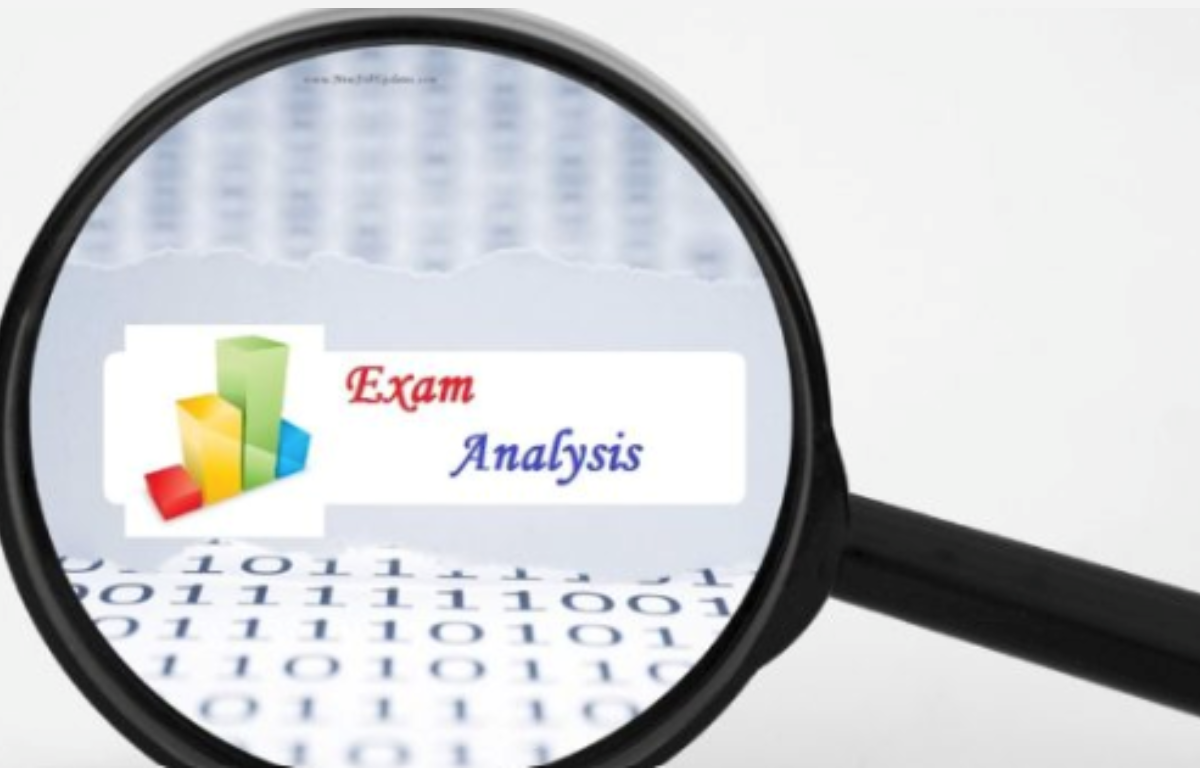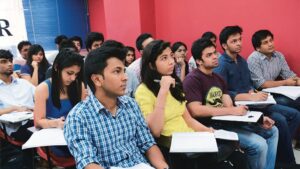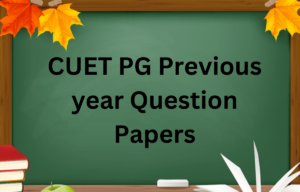Day 2 of CUET UG 2025 kicked off with excitement as thousands of students appeared for the Shift 1 exam on May 14, 2025 across 300+ cities. The exam was held in an online (CBT) mode. CUET 2025 is scheduled from May 13 to June 3, with two shifts each day. Shift 2 for today has been started at 3 PM. Don’t forget! Admit cards are available at cuet.nta.nic.in. Use your CUET login details to download the PDF. At Noida centres, today’s subjects included: English, General Test, Mathematics, Political Science, Physics, Chemistry, Economics, Biology, and Computer Science. More subjects will be updated soon. Stay tuned for the Shift 1 paper analysis and important exam tips.
CUET UG 2025 May 14 Exam Analysis
The first shift of CUET UG 2025 on May 14, 2025 has been successfully completed! The exam went smoothly at all centres without any issues. As per student feedback and expert reviews, the overall paper was well-balanced and similar to previous years. Most students found it manageable with no big surprises. Curious about how each subject went? Take a look at the subject-wise difficulty level in the table below. Stay tuned with us for more updates, student reactions, and expert insights from the upcoming CUET UG 2025 shifts. We’ll keep bringing you the latest details right here!
| CUET UG 2025 May 14 Exam Analysis | ||
| Subject | Difficulty Level | Topics and Weightage |
| General Test | Moderate |
|
| Biology | Easy to Moderate |
|
| Business Studies | Moderate |
|
| Chemistry | Moderate |
|
| Mathematics | Easy | To be updated |
| Computer Science | Easy | To be updated |
| Economics | Easy | To be updated |
| Physics | Easy | To be updated |
CUET UG 2025 May 14 Quantitative Aptitude Questions and Answers
Q1. If the sum of the diameters of two circles is 40 cm and the difference of their radii is 6 cm, then the ratio of the area of the smaller circle to that of the bigger circle is:
(a) 49:16
(b) 49:169
(c) 169:49
(d) 1:4
Ans. (c) 169:49
Q2. Find the angle of elevation of the Sun when the length of the shadow of a pole is times the height of the pole.
(a) 30°
(b) 45°
(c) 60°
(d) 90°
Ans. (a) 30°
Q3. The speed of the stream is 4/5 of the speed of a boat in still water. If the boat covers 198 km in 11 hours in downstream, then find the difference of time taken by the boat to cover 60 km in upstream and 36 km downstream.
(a) 24 h
(b) 26 h
(c) 28 h
(d) 20 h
Ans. (c)
Q4. If 40 boys can do a piece of work in 18 days working 6 hours per day, how many more boys are required to do the same work in 12 days working 4 hours per day?
(a) 50
(b) 56
(c) 40
(d) 45
Ans. (a) 50
Q5. If a solid sphere of radius 20 cm is moulded into 8 solid spherical balls of equal radius, then the radius of each ball will be:
(a) 10cm
(b) 12cm
(c) 5cm
(d) 15cm
Ans. (a) 10cm
CUET UG 2025 May 14 Economics Memory-Based Test Questions and Answers
(Directions Q1-Q5): Read the given case study and answer the following question:
The Central Bank is a crucial institution in any modern economy, responsible for regulating and maintaining financial stability. Almost every country has a central bank that oversees the monetary system. India established its central bank, the Reserve Bank of India (RBI), in 1935. The central bank performs multiple functions essential for economic management.
One of its primary roles is issuing the national currency. This function enables the central bank to regulate the money supply, ensuring economic stability. It employs various monetary tools such as bank rate adjustments, open market operations (OMO), and variations in reserve ratios to influence the money supply.
Additionally, the central bank acts as a banker to the government, managing public debt and executing monetary policy decisions. It is also the custodian of foreign exchange reserves, helping to stabilize currency value and manage external trade balances.
The central bank also functions as a bank to the banking system, providing liquidity support and acting as the lender of last resort. From a monetary policy perspective, a key concept is high-powered money (reserve money or the monetary base), which consists of the total currency issued by the central bank, held by the public and commercial banks. This high-powered money serves as the foundation for the credit creation process within the economy, influencing overall liquidity and economic growth.
Thus, the central bank plays a vital role in economic governance, financial regulation, and monetary stability, making it an indispensable institution in any modern economy.
Q1. What is the role of the central bank in currency issuance?
(a) It prints money without any restrictions to meet government needs
(b) It controls the money supply through issuing currency and regulating reserves
(c) It distributes money but does not regulate its value
(d) It only allows commercial banks to issue money
Answer: (b) It controls the money supply through issuing currency and regulating reserves
Solution. The central bank issues currency and regulates the money supply through monetary policy tools such as reserve requirements and open market operations.
Q2. Which of the following is NOT a function of the central bank?
(a) Controlling inflation through monetary policy
(b) Providing loans to the general public
(c) Acting as a lender of last resort to commercial banks
(d) Managing foreign exchange reserves
Answer: (b) Providing loans to the general public
Solution. The central bank does not provide direct loans to individuals; instead, it regulates financial institutions and provides liquidity to commercial banks when necessary.
Q3. How does the central bank control the money supply?
(A) By adjusting the bank rate
(B) By conducting open market operations (OMO)
(C) By imposing taxes on bank deposits
(D) By varying reserve ratios for commercial banks
Choose the correct answer from the options given below:
(a) (A), (B), (D) Only
(b) (A), (C), (D) Only
(c) (B), (C), (D) Only
(d) (A), (B), (C), (D)
Answer: (a) (A), (B), (D) Only
Solution. The central bank controls money supply by adjusting the bank rate, conducting OMO, and modifying reserve ratios. Taxes on bank deposits are not a tool for money supply regulation.
Q4. What is “high-powered money”?
(a) Money that commercial banks lend to the public
(b) The total currency issued by the central bank held by the public and commercial banks
(c) Money that exists only in digital form
(d) Foreign currency reserves held by the central bank
Answer: (b) The total currency issued by the central bank held by the public and commercial banks
Solution. High-powered money (also known as reserve money or the monetary base) consists of currency issued by the central bank that is either held by the public or commercial banks.
Q5. How does the central bank influence inflation?
(A) By adjusting interest rates
(B) By increasing or decreasing reserve requirements
(C) By directly setting the price of goods and services
(D) By conducting open market operations
Choose the correct answer from the options given below:
(a) (A), (B), (D) Only
(b) (A), (C), (D) Only
(c) (B), (C), (D) Only
(d) (A), (B), (C), (D)
Answer: (a) (A), (B), (D) Only
Solution. The central bank controls inflation through interest rate adjustments, reserve requirements, and open market operations. It does not directly control the prices of goods and services.



 Best CUET Coaching in Delhi - Factors De...
Best CUET Coaching in Delhi - Factors De...
 Best CUET Coaching in Noida - Get Top 5 ...
Best CUET Coaching in Noida - Get Top 5 ...
 CUET PG Previous Year Question Papers wi...
CUET PG Previous Year Question Papers wi...







